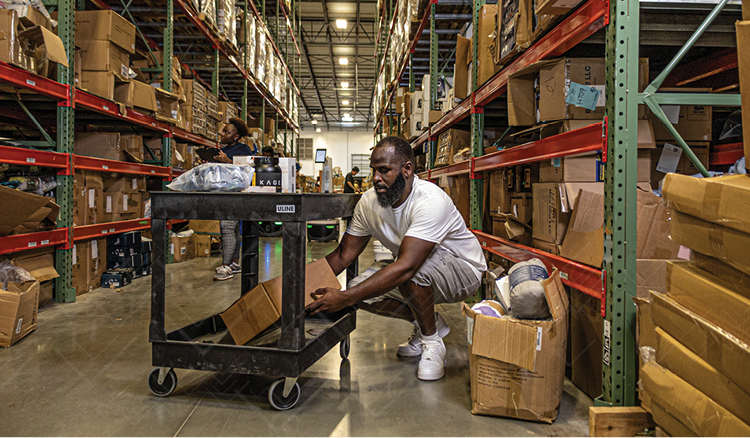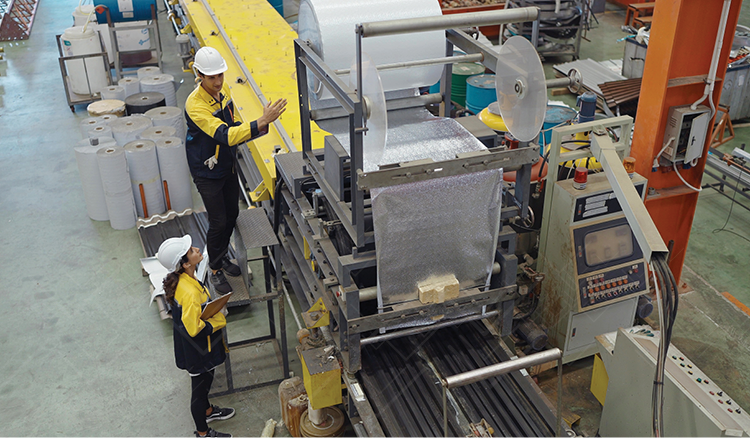Reshoring: Time to Step Up and Accelerate the Trend
Back in early 2020, I published a couple articles aimed at encouraging US Manufacturers to stay the course and go on the offensive while global supply chains hemorrhaged amidst geopolitical turmoil. Now is the Time to Take it Back and Manufacturing Companies, Keep the Faith and Soldier On were calls to action during a time of great confusion and chaos – periods which have consistently proven to be the right time to rise above the noise and come out on the winning side.
In hindsight, these calls to action in early 2020 were the right advice, because companies that seized the opportunity have gained an advantage. If anything, the advice may have even underestimated the significance of the geopolitical circumstances we find ourselves in and the extent of the window we have to work with.
What we’re likely encountering is a referendum on globalism as an ethos. The “Take it Back” motto may mean more than we originally expected. We seem to be placed in the middle of a confluence of imperatives that range from operational to national security. We have more than an opportunity – we have a duty ahead.

Living through the effects of bad decision-making
Decades of bureaucratic complacency have left us vulnerable and inefficient. As we’ve discussed in prior blogs, the easy cost-out opportunities and the siren song of cheap labor in low-cost countries have commanded the full attention of credulous product managers and sourcing leaders since the late 90s.
Did they bother to factor in the total landed costs of their decisions, or would that have diluted their business case? Did they quantify the impact of inevitable one-off supply chain disruptions and the ripple effect that would have across the business? Did they account for the importance of supply chain resiliency? Of course not. Taking these things into account would have torpedoed all their flimsy business cases, but bureaucrats needed material for their annual performance reviews. The annual reviews and middle management promotions were far more important than considering the long-term implications to their business or to their country.
To a generation all too familiar with having to clean up the messes we’ve inherited, we’re finding ourselves again in familiar territory. We have to accept the burden of fixing the problem or we’ll be left in a defenseless position.
At the time this blog is being written, there are currently somewhere between 200,000 and 500,000 container ships offshore awaiting arrival at the US ports. Shelves are empty. Medications are unavailable. Raw materials are drying up. The data is crystal clear that this is not a manpower problem. The labor force is working and they are generally uninhibited by the fear propaganda emanating from mainstream media, corrupt politicians, and quasi-governmental officials.
Rather, something else seems to be throttling the supply chains and imposing artificial inefficiencies. We should have learned in early 2020 that our trading partners might not always have our best interest in mind and it might not be wise to abandon all of our productive capacity into the hands of our frenemies.
Reshoring to restore balance in our supply chains
The importance of ending this hostage situation is right in front of our faces. Many companies are already taking action and shoring up their supply base. Others have recognized the problem and have begun to mobilize. Some laggards are still in denial or attempting to rationalize the situation. However, one thing is universally true: the genie is out of the bottle and supply chain leaders know we have a paradigm shift on our hands, whether they are currently verbal about it or not.
The solution revolves around re-establishing balance and leverage. From a purely operational standpoint, everyone knows of the heavy risk associated with being single sourced. You relinquish all leverage and become hostage to the priorities of your supplier. Is there any practical difference when spend is 100% with one supplier or allocated 95% / 5% across two? The answer is no.
While strategies will undoubtedly differ company by company, the fact remains that there’s a balance to be targeted that achieves resiliency, service, and cost competition. The duty upon us all is to dust off the operational wisdom and rediscover the proper balance.
Restoring balance is both a supply and demand side effort
The “Take it Back” motto was originally targeted toward the supply side of the buying relationship, encouraging domestic suppliers to get more aggressive and signal to buyers that they can handle new volume. This motto remains as relevant today as it was in early 2020, and it sounds simple because it is.
You have to make yourself available. Demonstrate that you can handle incremental volume. Commit to finding innovative ways to scale in a cost-effective way. Get yourselves on preferred supplier lists and stay on the radar. Signal to prospective customers that you can handle the work and then prove it with world-class service. High levels of service with a local JIT component will win the day every time against the labor arbitrage alternative with long lead times and minimal visibility.
While that is all true, buyers need to close the gap and meet local suppliers in the middle. As a buyer, recognize that many local suppliers lack the scale necessary for things such as a robust marketing department. Be proactive and go find them in your cities and communities. Commit to volume levels that allow them to invest in people, processes, and equipment. Partner with them and hold them to a high standard. Pass along best practices that will allow them to grow with you. Approaching building your local supply base as a strategic priority.
Unwinding the current hostage situation across our supply chains is not going to be a quick effort. Nevertheless, it is an inevitable conclusion. The referendum on the globalism ethos is upon us and there’s no putting the genie back in the bottle. We’ll achieve the right pace of progress when we treat it like the wartime effort it really is – and the early movers will continue to reap the spoils.
To learn more about how Veryable can help you scale efficiently and manage uncertainty in your operations, click here.
To get started, contact us or create a free business profile today.
Previous Posts
How Policy Constraints, Not Just Production Bottlenecks, Threaten Your Bottom Line
The Future of Manufacturing and Logistics
Create a free business profile today to explore our platform.






